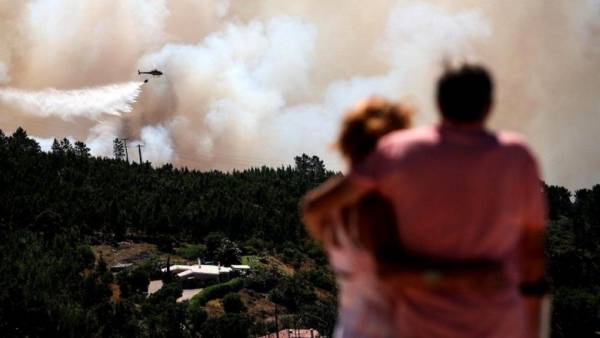This fire with us for a long time: five myths about forest fires
Columnist for BBC Future explores five of the most common misconceptions that prevent us from effectively deal with forest fires.
Upstairs
The flames of forest fires fire is rolling the roller on California — thousands flee their homes, tens of people died, the fire reached the Bohemian districts of the state, and mansions of some well-known actors and singers have already burned.
In summer, a similar disaster overtook Greece, killing 99 people. Due to record heat and drought in July, the forest burning in Sweden.
In Russia, the raging fire in the woods almost every summer — for example, in July of this year, smoke from fires in Siberia already reached North America.
Well, now due to global warming it will always and everywhere? Or forest fires are a normal thing of nature, though, and bring in our life a tragedy? Can they be avoided and if so, how?

Let’s understand the five most resistant myths that prevent us to fight effectively against this scourge.
Myth number 1: the Regular cutting of forests prevents forest fires
There is a perception that deforestation, at least selectively, can prevent fires.
But in fact, many forestry experts say it’s ineffective because she still stumps and branches that can be considered an excellent fuel for a fire — because they are usually drier and easier to ignite than live trees — especially in the absence of forest cover.
News the Satellite showed the scale of the fires in California (photo)
the Satellite showed the scale of the fires in California (photo)
The words of these experts was confirmed many times by research. For example, one of the recent works of scholars demonstrated that the degree of burnout was higher in areas where there were higher levels of forest management, care of the forest.
Scientists working on the problem of forest conservation from fires, reject the claim that cutting supposedly protects from the fire of the species under threat of extinction (this argument is popular among supporters of cuttings).
In fact, the animals and birds (like the famous spotted owl) benefit from burnt forest, and the felling of trees creates a problem for them.
More benefits gives other practice — deleting from a forest of entire regions. That is what the firemen to prevent the fire from spreading. Myth number 2: You will not be able to protect from fire your home
Myth number 2: You will not be able to protect from fire your home
Burning wood carries a great danger, the flame is difficult to stop. However, each household may take a number of measures that will reduce the risk.
We must begin with the house. Buildings with roofs made of heat-resistant materials increase the chances of escape from fire. It is also recommended to clean the building and adjacent areas from flammable materials, including leaves.
Family can create a “protective zone” between their home and the surrounding area.
This means that it is necessary to remove everything that can catch fire, in the zone of nine metres from the building. Even when near to home the trees are at a distance of 9 to 30 meters, it is necessary to ensure that their crowns are also separated from each other at such a distance — this hinders the spread of fire, reduces its speed.
 Myth number 3: Forest fires are inevitable, they are natural to nature
Myth number 3: Forest fires are inevitable, they are natural to nature
Although natural fires are indeed a natural phenomenon, their present intensity and prevalence is not natural, it is one of the factors influencing changes in the planet’s climate.